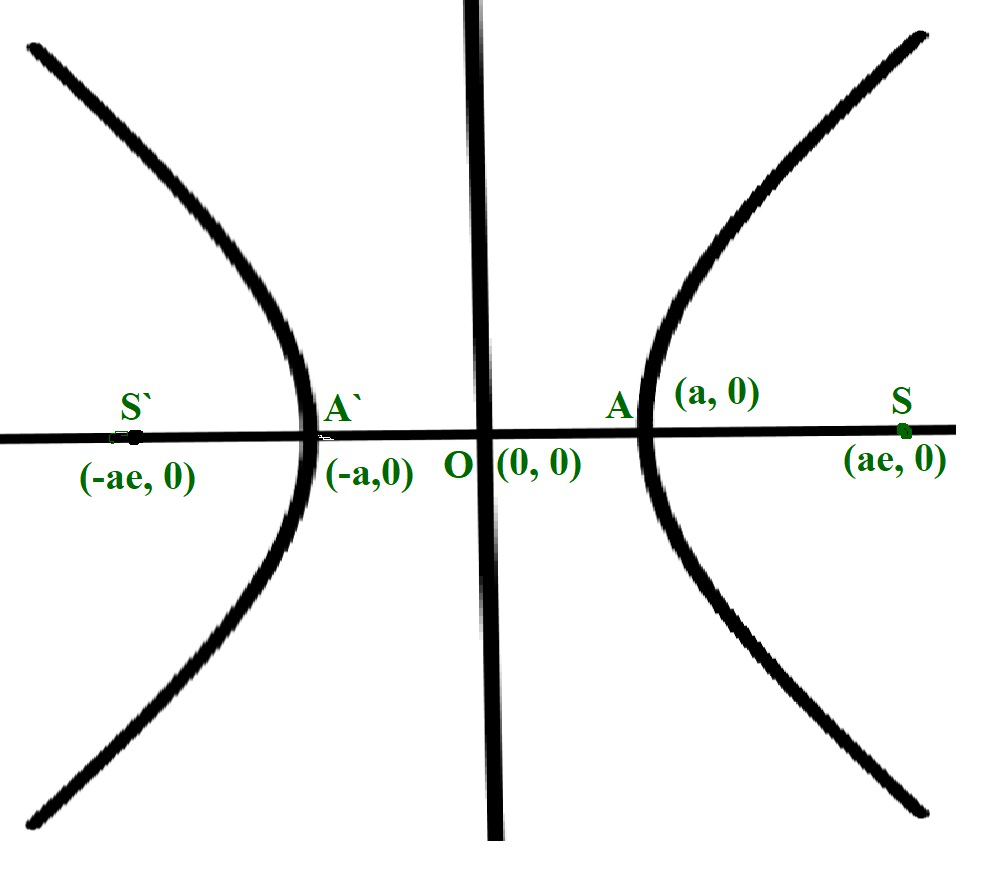Dados dos números enteros A y B , que representan la longitud de los ejes semi-mayor y semi-menor de una hipérbola , la tarea es encontrar la longitud del lado recto de la hipérbola.
Ejemplos:
Entrada: A = 3, B = 2
Salida: 2.66666Entrada: A = 6, B = 3
Salida: 3
Aproximación: El Latus Rectum de una hipérbola es la cuerda focal perpendicular al eje mayor y la longitud del Latus Rectum es igual a (Longitud del eje menor) 2 /(longitud del eje mayor).
Siga los pasos a continuación para resolver el problema dado:
- Encuentre la longitud del eje mayor de la hipérbola y guárdela en una variable, digamos mayor .
- Encuentre la longitud del eje menor de la hipérbola y guárdela en una variable, digamos minor .
- Después de completar los pasos anteriores, imprima el valor de (menor*menor)/mayor como la longitud resultante del Latus Rectum.
A continuación se muestra la implementación del enfoque anterior:
C++
// C++ program for the above approach
#include <iostream>
using namespace std;
// Function to calculate the length of
// the latus rectum of a hyperbola
double lengthOfLatusRectum(double A,
double B)
{
// Store the length of major axis
double major = 2.0 * A;
// Store the length of minor axis
double minor = 2.0 * B;
// Store the length of the
// latus rectum
double latus_rectum = (minor * minor)
/ major;
// Return the length of the
// latus rectum
return latus_rectum;
}
// Driver Code
int main()
{
double A = 3.0, B = 2.0;
cout << lengthOfLatusRectum(A, B);
return 0;
}
Java
// Java program for the above approach
import java.io.*;
class GFG{
// Function to calculate the length of
// the latus rectum of a hyperbola
static double lengthOfLatusRectum(double A,
double B)
{
// Store the length of major axis
double major = 2.0 * A;
// Store the length of minor axis
double minor = 2.0 * B;
// Store the length of the
// latus rectum
double latus_rectum = (minor * minor) / major;
// Return the length of the
// latus rectum
return latus_rectum;
}
// Driver Code
public static void main(String[] args)
{
double A = 3.0, B = 2.0;
System.out.println(lengthOfLatusRectum(A, B));
}}
// This code is contributed by Dharanendra L V.
Python3
# Python program for the above approach # Function to calculate the length of # the latus rectum of a hyperbola def lengthOfLatusRectum(A,B): # Store the length of major axis major = 2.0 * A # Store the length of minor axis minor = 2.0 * B # Store the length of the # latus rectum latus_rectum = (minor * minor) / major # Return the length of the # latus rectum return latus_rectum # Driver Code A = 3.0 B = 2.0 print(round(lengthOfLatusRectum(A, B),5)) # This code is contributed by avanitrachhadiya2155
C#
// C# program for the above approach
using System;
class GFG
{
// Function to calculate the length of
// the latus rectum of a hyperbola
static double lengthOfLatusRectum(double A,
double B)
{
// Store the length of major axis
double major = 2.0 * A;
// Store the length of minor axis
double minor = 2.0 * B;
// Store the length of the
// latus rectum
double latus_rectum = (minor * minor)
/ major;
// Return the length of the
// latus rectum
return latus_rectum;
}
// Driver Code
public static void Main ()
{
double A = 3.0, B = 2.0;
Console.WriteLine(lengthOfLatusRectum(A, B));
}}
// This code is contributed by ukasp.
Javascript
<script>
// Javascript program for the above approach
// Function to calculate the length of
// the latus rectum of a hyperbola
function lengthOfLatusRectum(A, B)
{
// Store the length of major axis
var major = 2.0 * A;
// Store the length of minor axis
var minor = 2.0 * B;
// Store the length of the
// latus rectum
var latus_rectum = (minor * minor) / major;
// Return the length of the
// latus rectum
return latus_rectum;
}
// Driver Code
var A = 3.0, B = 2.0;
document.write(lengthOfLatusRectum(A, B));
// This code is contributed by 29AjayKumar
</script>
Producción:
2.66667
Tiempo Complejidad: O(1)
Espacio Auxiliar: O(1)
